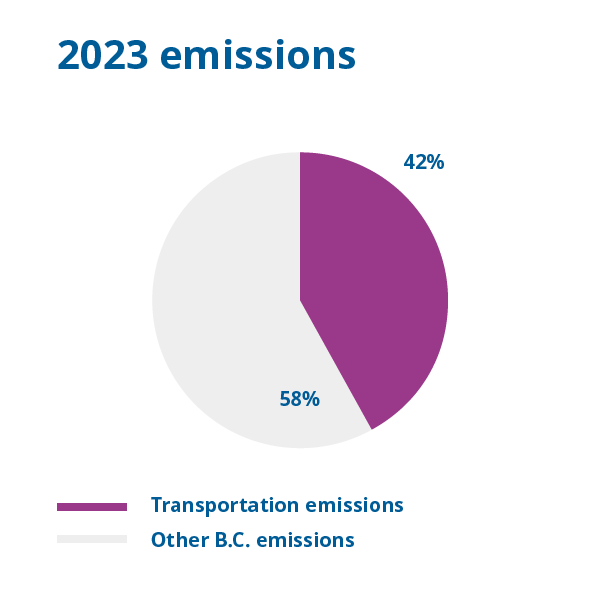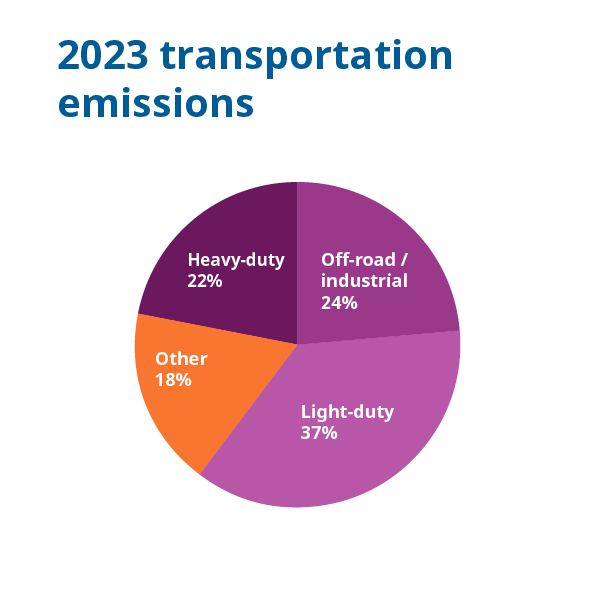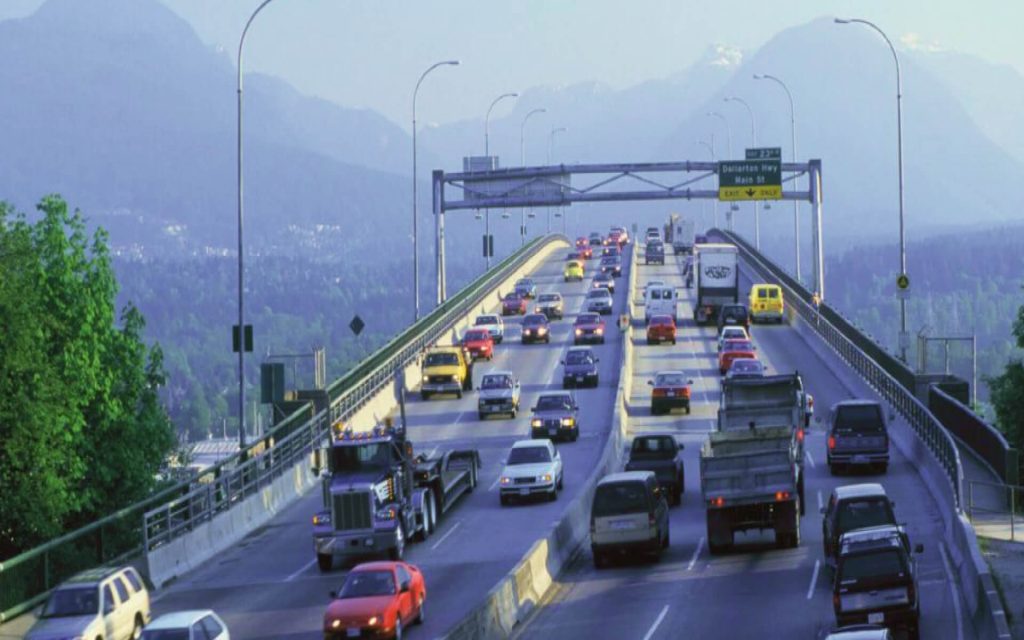Tracking emission from transportation

Transportation caused 42% of B.C.’s total emissions in 2023.
Breaking down emissions from transportation
In 2023, light-duty vehicles contributed to 37% of transportation emissions. This category includes passenger vehicles like cars, trucks, ATVs and motorcycles. Other vehicle types combined made up the remainder:
- 24% off-road and industrial vehicles like those used by farms and mines
- 22% heavy-duty vehicles like those used to move goods
- 18% other vehicles types including:
- Airplanes and helicopters (within B.C.)
- Public transit, like buses and ferries
- Commercial and recreational boats


Getting roads ready for climate change
We’re strengthening highways and resource roads so they won’t be washed out by future floods.
B.C. is taking action
Learn how B.C. is improving vehicle efficiency while making it easier for people to drive less or drive an electric vehicle.
-
Charging stations at government buildings
Electric vehicle (EV) chargers at provincial government buildings are expanding the province’s charging network.
Charging stations are for employees, visitors and fleets.
-
Expanding B.C.’s vehicle charging network
Rebates are helping businesses, utilities, local governments, and Indigenous communities install public fast-charging stations.
-
Expanding skills training for electric vehicle maintenance
Go Electric is helping to train our electric vehicle workforce for the future.



